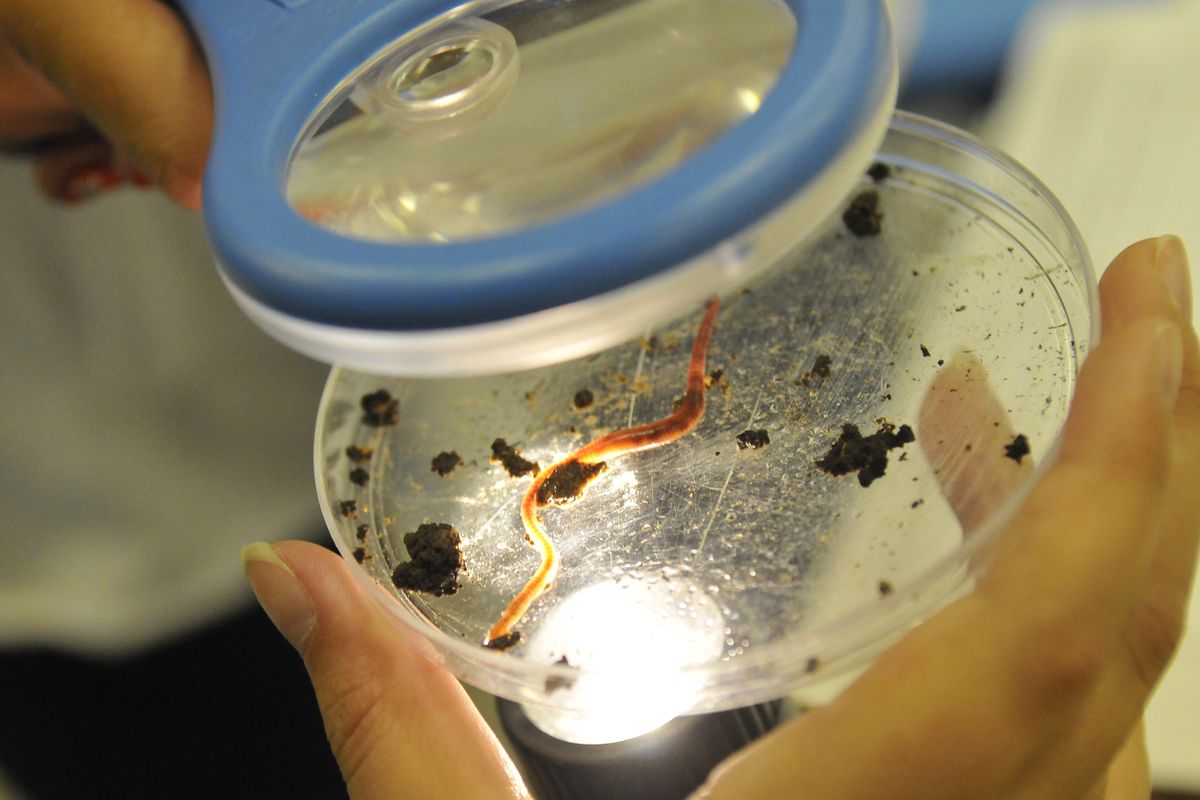Test scores rise as districts adopt tailored strategies
Elementary students improve understanding of science

Chester Elementary School fifth-graders debated in class recently whether cutting a worm in half resulted in two worms or a dead one.
Since the class was divided on the issue, the teacher told students to think about the answer as they continued to familiarize themselves with the squirmy vermis.
Such hands-on experiences have helped Central Valley School District dramatically boost the number of fifth-graders passing the state assessment for science last year.
While Central Valley is a standout locally, with 87.2 percent of fifth-graders passing the state test in 2012, Spokane-area fifth-graders as a whole have improved their understanding of science. Washington assessment scores show improvement by 30 percentage points or more since 2010 for Spokane Public Schools and Central Valley, East Valley, West Valley and Mead school districts.
Mead has the second-highest success rate in the area, with 82.7 percent of fifth-graders passing the state assessment. The rate is 69.6 percent at Spokane Public Schools and 66 percent at West Valley, mirroring the state average.
School officials attribute the increase to a greater emphasis on science at the elementary level as well as classroom teachers who write science curricula rather than relying on prepackaged materials.
“We didn’t feel that they (the kits) aligned as well to the state standards,” said Camille Huff, Central Valley’s science curriculum coordinator. “We felt the teachers of our district could actually produce a product that would provide that to our students in a way that a publisher could not.”
She added, “We also have been very intentional about integrating science into math and reading, and we’ve had intense staff development.”
East Valley School District’s elementary school teachers are also writing the district’s science curriculum.
“Teachers are adapting the curriculum to the kids they are teaching and to their schedule – their day or their month,” said Jan Beauchamp, East Valley School District assistant superintendent. The district’s fifth-graders saw an improvement of almost 46 percentage points over two years in state assessment scores – the greatest increase among Spokane-area districts.
“We are doing a better job of incorporating activities that are directly related to the standards they need to learn,” she added. “I think when teachers search for and find what works, it’s a direct hit. It’s so focused. Now they have activities that fit into learning throughout the day.”
Central Valley’s new curriculum was implemented in 2008, a year or two ahead of other districts.
Chester Elementary teacher Annette Lamon said science is much more hands-on than it used to be, and that makes a huge difference.
Students cannot say “ew, yuck or gross … when they say that it’s because it’s something they don’t understand. The more they explore, and the more you let them play with it, the more they understand.”
Washington standards require fifth-graders to demonstrate basic concepts in physical, earth and life sciences. Many elementary schools have started teaching science in kindergarten to make sure students have a better grasp by fifth grade.
Central Valley’s curriculum, called Science Any Time, uses “inquiry and application,” Huff said. Students design experiments or conduct research to answer questions.
Spokane Public Schools, West Valley and Mead school districts are using state-prepared science materials at the elementary school level, and science is taught as a lesson and not always incorporated into multiple lessons throughout the day. Although those districts don’t match Central Valley’s passing rate on state assessments, they have seen improvement in scores during the last two years.
Jean Marczynski, West Valley School District’s assistant superintendent for teaching and learning, said “perhaps one of the reasons for the uptick in multiple districts is that there’s been more of a focus on science in the elementary level, and perhaps we’re more balanced in our approach.”